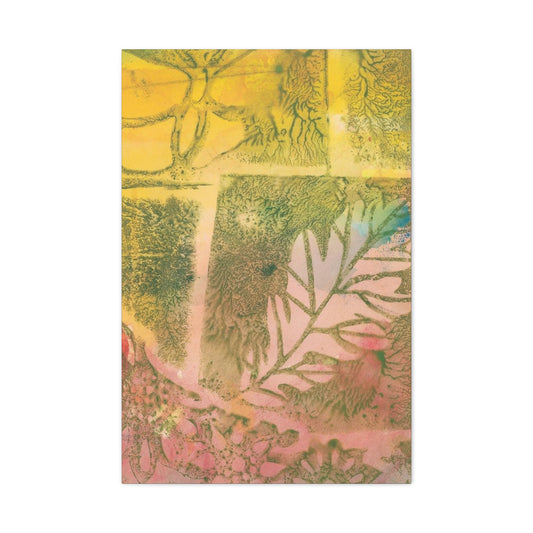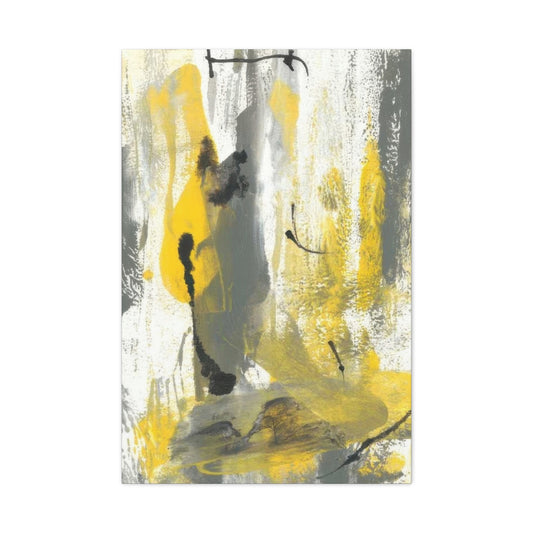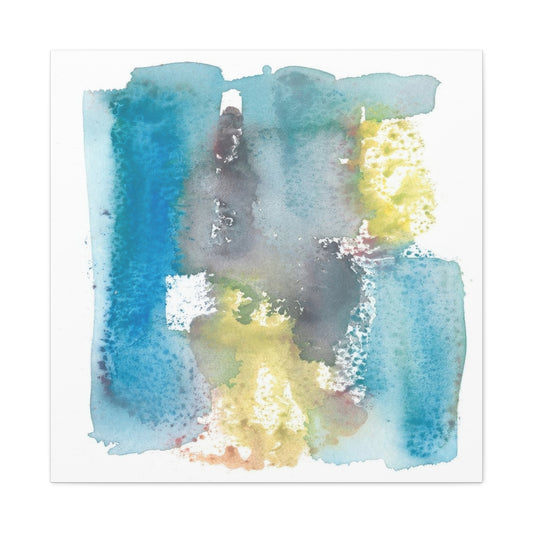The Origins of Mussini: A Legacy Rooted in Art, Alchemy, and Vision
In the vast chronicle of European fine art, where technique and tradition are passed down through generations like sacred relics, few materials carry as much historical resonance and artistic integrity as Schmincke Mussini oil paints. These paints are not just craftedthey are curated, embodying an artistic and scientific lineage that dates back to the golden age of European painting. At the heart of this legacy stands Cesare Mussini, a distinguished 19th-century Italian painter and academic, whose contributions transcended the canvas and delved deep into the science of materials.
Born into the intellectual and artistic crucible of Florence, Mussini was both a scholar and an alchemist of color. His time coincided with a pivotal moment in European art, when Romanticism was weaving its emotional expressiveness into the classical threads of the Renaissance. Amid this cultural synthesis, Mussini developed a set of paint formulations that combined empirical understanding from the old masters with emerging scientific insights. These unique mixtures aimed to reproduce the luminous depth, textural elegance, and visual integrity of historic oil paintingsqualities often lost in the industrialized manufacturing of modern pigments.
In 1875, these exceptional formulations found a new life when they were acquired by German chemists Josef Horadam and Hermann Schmincke. With a shared passion for both science and artistry, they founded the Schmincke company in 1881, using Mussini’s notes as the foundation for a new standard in oil paint production. Unlike other brands that embraced commercial shortcuts, Schmincke made a commitment to uphold the rigorous standards outlined in Mussini's original methods, treating paint not merely as a commercial product, but as a finely tuned instrument for expression.
This devotion to Mussini’s vision was more than historical homage. It represented a dedication to elevating the very act of paintingplacing the artist in dialogue with centuries of craftsmanship and scientific discipline. Today, Mussini oil paints remain a bridge between past and present, offering modern painters a palette rooted in the wisdom of time-honored traditions while fully embracing the demands of contemporary practice.
The Unique Formulation: A Harmonious Union of Resin, Oil, and Light
What truly distinguishes Mussini oil paints from other professional-grade brands lies not only in their legacy but in their intricate and innovative composition. At the core of each tube is a binder system that reflects Mussini’s original visiona refined blend of natural oils and dammar resin, meticulously crafted to achieve an extraordinary visual and physical performance on canvas.
Dammar resin, harvested from trees in Southeast Asia, has long been associated with classical oil painting. Since the Baroque era, it has been prized for its ability to create luminous finishes and add optical depth. In Mussini paints, this resin is not merely an additive but an integral component of the binder. When combined with oil, it allows light to penetrate the paint surface, refract through its layers, and return with a brilliance akin to stained glass. This prismatic glow cannot be replicated with standard oil paints, making Mussini colors almost jewel-like in their clarity and depth.
Beyond aesthetic appeal, the dammar resin introduces a dual-action drying process. Unlike conventional oil paints that dry solely through oxidation, Mussini paints dry via both solvent evaporation and oxidation. This creates a surface that is not only more stable but also tension-free. Artists working in complex layers or with detailed glazes often struggle with cracking or wrinkling; Mussini’s hybrid drying system effectively mitigates these issues, allowing for a flawless finish even in technically demanding compositions.
The oil blend used in Mussini paints is equally sophisticated. Schmincke employs five distinct types of natural oils carefully selected based on their compatibility with specific pigments. Walnut and safflower oils, known for their clarity and resistance to yellowing, are reserved for lighter shades where preserving brilliance is essential. Meanwhile, the more robust linseed oil is used to support deeper hues that demand durability and strength. This strategic pairing of oils ensures that each pigment retains its individual character, balancing color fidelity with archival stability.
This nuanced approach extends to every stage of production. Developing a new Mussini color is a painstaking process that can span up to three years. Each pigment is evaluated for compatibility with the dammar-oil binder, its lightfastness, its texture, and its behavior during application and drying. Once the ideal formulation is achieved, the paint is not immediately released. Instead, it undergoes a critical three-month maturation period during which chemical instabilities are allowed to emerge and be addressed. Only after this phase does the paint reach the hands of artists, ensuring a product of exceptional consistency and reliability.
Chromatic Integrity and Artistic Expression: The Soul of the Mussini Palette
The Mussini color range is a masterclass in chromatic precision and expressive depth. Unlike mass-market oil paints that often rely on blended pigments to cut costs, Mussini’s range includes 64 single-pigment colors. This is not a trivial detail. Single-pigment colors offer a clarity and predictability that is essential for nuanced mixing. Artists can layer and blend these hues without fear of muddiness or unexpected tonal shifts, preserving vibrancy and control in every brushstroke.
For painters who employ glazing techniques or seek subtle transitions of tone and light, Mussini’s transparent colors are invaluable. The range boasts 48 distinct transparent hues, designed to capture the interplay of light and surface with exceptional delicacy. These colors are ideal for classical methods such as indirect painting, where layers of translucent color are built up over a reflective ground to create a sense of inner glow and dimensionality. When used properly, they simulate the translucence of skin, the shimmer of silk, or the ethereal atmosphere of a landscape at dusk.
Certain shades within the Mussini range have become legendary in their own right. Caesar Purple and Byzantine Blue, for instance, are celebrated for their haunting, regal intensityshades that seem to shimmer with an inner fire. Atrament Black defies the conventional role of black as a deadened backdrop, emerging instead as a rich, living shadow with nuanced undertones. These colors are not only visually compelling but emotionally resonant, inviting the artist into a deeper, more intentional dialogue with their medium.
It’s important to note that while Mussini paints are fully compatible with other professional oil paints and mediums, their unique composition benefits from thoughtful pairing. Introducing large amounts of standard oils can dilute the very optical and structural qualities that define Mussini. Schmincke, therefore, offers specially formulated mediums that support the specific properties of the dammar-resin binder. When thinning or modifying paint, turpentine or high-quality substitutes are preferred, as these respect the delicate balance of the resin-oil emulsion and preserve the integrity of the final surface.
At its core, the Mussini philosophy is about more than just producing colorit is about honoring the artist’s role as a craftsman and storyteller. Every decision, from pigment sourcing to drying protocols, is guided by a belief in quality over convenience. This makes Mussini not just a brand but a traditiona legacy handed down from Cesare Mussini through the halls of Florence and into the modern studio.
To work with Mussini paints is to participate in a continuum, where every brushstroke echoes the wisdom of the past while speaking to the present. It is an invitation to slow down, to consider not just what you paint, but how and why. As we continue this exploration in Part 2, we’ll dive deeper into the chromatic architecture of the Mussini palette, examining how the science of color and the art of perception intersect to create one of the most revered ranges in the world of oil painting.
The Mussini Philosophy: A Palette Engineered for Mastery and Chromatic Integrity
In the world of fine oil painting, the artist’s palette is not merely a toolit is the heart of the painter’s language, a sophisticated space where the intellect of composition meets the emotion of expression. Among the finest oil paints available to professionals and connoisseurs alike, Schmincke’s Mussini range stands apart for its synthesis of historical reverence and modern pigment science. These paints are not just colorants; they are finely calibrated instruments crafted to respond to the highest demands of artistry.
What makes Mussini oil colors exceptional is not just their extensive selection, but the ideology behind their creation. The palette is rooted in the principle of chromatic purity. Mussini offers 64 single-pigment shadesan approach that honors both the visual clarity of classical traditions and the dynamic needs of contemporary artists. In contrast to many commercial oil paints that rely on blended pigments for economic efficiency, Mussini commits to individuality and integrity in each tube.
Single-pigment colors behave with superior predictability. When mixed, they produce results that are luminous and clean, avoiding the dullness that can arise when multiple undertones from different pigments conflict. Mixing a vivid green using a single-pigment Ultramarine Blue and Lemon Yellow yields a color that remains bright, vibrant, and full of life. The alternative blending of multi-pigment hues frequently leads to chromatic confusion, with muddy or grayed-out results. The Mussini approach maintains tonal identity, preserving clarity through every layer and transition.
Moreover, the architecture of the Mussini palette is designed to support refined color relationships and disciplined modulation. The systematic inclusion of warm and cool variants across all major color families empowers painters to manage temperature with a natural, intuitive flow. The reds span emotional extremes, from the passionate intensity of Crimson Lake to the stately depth of Pompeian Red. The yellows transition from piercing highlights like Pure Brilliant Yellow to the earthy warmth of Mars Yellow, supporting both vivid accents and foundational underpainting.
Blues are treated with special care in the Mussini range. Each variant has been selected for its unique physical and visual properties. From the ethereal presence of Cobalt Turquoise Light to the brooding elegance of Indigo, Mussini's blues offer more than they bring in personality. The inclusion of both synthetic and mineral pigments like Phthalo Blue and genuine Cobalt varieties reveals a deep understanding of how factors like particle size and light refractivity affect chromatic perception. These are not interchangeable colorsthey are strategic components of a nuanced visual vocabulary.
The range of greens continues this theme of deliberate construction. Mussini greens are not merely a nod to foliage or naturalism; they include specialized tones like Verdaccio, a historical color essential in Renaissance underpainting, particularly in the depiction of flesh. It's muted, subtle green allows for natural skin tones when glazed over. On the other end of the spectrum, colors like Permanent Green Deep offer saturated vitality, perfect for modern botanical studies or vibrant landscapes.
Transparency, Light, and the Emotional Resonance of Color
Mussini oil colors are uniquely formulated with a resin-oil binder that includes dammar resin, setting them apart from typical oil paints. This binder enhances luminosity and transparency, making the range particularly suitable for techniques such as glazing. In glazing, transparent layers are built up gradually, allowing light to penetrate the top films and reflect from the ground or underlying color strata. The resulting visual effect is not just one of brightness, but of internal radiancean almost living glow that gives a painting emotional depth and technical richness.
Transparency in Mussini’s palette is not incidental. Forty-eight of its shades are specifically designed to be transparent or semi-transparent, offering exceptional control for layering, shadow-building, and the subtle articulation of light. Colors like Caesar Purple and Byzantine Blue exemplify how transparency and pigment behavior can evoke a powerful emotional atmosphere. Caesar Purple conveys imperial gravitas with crimson undertones and a deep velvety shadow, while Byzantine Blue channels the reflective and iridescent nature of ancient glass mosaics. These are not just colorsthey are carriers of cultural memory and emotional nuance.
Atrament Black is another remarkable example. Unlike many blacks that flatten space and deaden vibrancy, Atrament Black possesses an organic richness. It feels dimensional, almost velvet-like, and invites deeper looking. It doesn’t absorb light into nothingness; it dances with it subtly, offering shadow without deadening surrounding hues. Used strategically, it can create spatial tension, contrast, and textural mystery in both realist and abstract compositions.
Earth tones and neutrals often serve as the unsung heroes in oil painting, yet in the Mussini line, they are given just as much care and attention as more flamboyant colors. Burnt Sienna, for example, glows with volcanic warmth, offering richness for landscapes, portraits, underlayers, or architectural elements. Neutral Gray is delicately balanced to be temperature-neutral, serving as an ideal mixing companion that can deepen or soften colors without introducing an unwanted chromatic bias.
The ability to navigate transparency and opacity within the same palette is one of Mussini’s most powerful offerings. It allows artists to move seamlessly between bold, impastoed statements and whisper-thin glazes, making the painting process as responsive and expressive as the artist's own instincts.
Craftsmanship, Stability, and Responsive Performance in the Studio
What separates Mussini from many other premium paint lines is its attention to the microstructure of the paint itself. Behind every tube is a rigorous manufacturing process that blends historical technique with modern innovation. Each pigment begins its journey through careful selection for purity and lightfastness. These are not bulk pigments but refined materials subjected to extensive quality control. Once sourced, the pigments are milled in multiple stages to achieve optimal particle uniformity, ensuring consistent color behavior on canvas.
These finely milled pigments are then integrated into the resin-oil binder mixture, calibrated to allow the pigment to reveal its full chromatic potential. Mussini’s use of dammar resin in this process is a nod to classical painting methods, but it is refined through contemporary chemistry. Once the pigments and binder are united, the mixture is not packaged immediately. Instead, it rests for up to three months, a dormant phase during which the components stabilize, and any inconsistencies are allowed to manifest and be corrected.
This resting period is crucial. It allows the paint to become homogeneous and prevents future issues like pigment separation or uneven drying. The result is a product with exceptional consistency and workability. Mussini's paintings respond to brush pressure with a tactile fluidity that is neither too loose nor too stiff. They retain their body during application yet spread with grace, offering articulate control whether applied with brush, knife, or fingers. This sensitivity to manipulation makes the paints feel alive in the hand, responsive to even the subtlest intention.
The drying behavior of Mussini oil paints is another highly considered aspect. Unlike traditional oils that dry purely through oxidation, Mussini’s binder also includes a solvent evaporation component, which supports a more even and tension-free drying process. This hybrid drying system allows for predictable surface curing, particularly useful in glazing and layering techniques. Transparent layers dry faster due to their thinness and lower oil content, while impasto applications retain richness and depth without excessive cracking or surface dulling.
To aid artists further, Schmincke includes a comprehensive symbol system on the Mussini color chart, providing clear information about drying times, lightfastness, transparency, and pigment composition. This level of transparency ensures that painters can work with confidence, planning complex layering systems or spontaneous gestures without the anxiety of unpredictability.
Mussini oil paints are not just premium toolsthey are collaborators in the creative process. They offer a dialogue rather than a dictation, encouraging artists to explore, refine, and express with freedom. The colors do not just sit passively on the canvas; they engage, absorb, reflect, and resonate. Whether you are rendering the subtle transitions of human skin, capturing the atmosphere of a twilight sky, or building an abstract composition driven by intuition and emotion, Mussini's paintings give you a platform of excellence from which to work.
By bridging the finest aspects of Old World craftsmanship with the demands of contemporary artistry, Mussini oil paints embody a legacy of luminosity. They are paints for those who demand not just color, but characterfor those who see the act of painting as both an art and an architecture of light, depth, and meaning.
The Scientific Alchemy Behind Mussini Oil Paints: A Marriage of Tradition and Precision
The enduring allure of Schmincke Mussini oil paints is not confined to their breathtaking color palette or their rich historical legacy. At their core lies a meticulously engineered formulation that embodies both the legacy of classical craftsmanship and the exactitude of modern material science. Mussini paints are not merely tools for expression; they are complex systems built upon an intricate interplay of chemistry, physics, and fine art heritage.
What sets Mussini apart is its commitment to a unique resin-oil binder system, a formulation that redefines the very mechanics of drying and paint behavior. Unlike conventional oil paints that rely solely on oxidative drying, Mussini’s binder introduces an elegant duality: it blends five select oils with natural dammar resin. This fusion creates a synergistic drying process that operates through both oxygen polymerization and solvent evaporation. The outcome is a paint film that is not only more stable and flexible but also one that cures more uniformly and with fewer complications like cracking or wrinkling.
The dammar resin, extracted from Dipterocarpaceae trees in Southeast Asia, plays a pivotal role in this formulation. Revered for its clarity and high refractive index, dammar enhances light transmission through the paint layers, contributing to a luminous, jewel-like surface quality. Yet, its contribution is not merely visual. Chemically, it forms a lattice-like structure with the oils that enhances the resilience of the paint film. This interlocking matrix is especially critical for layered painting techniques, where early and late applications must cure at compatible rates to avoid structural failure.
Mussini’s binder composition adjusts not only for drying behavior but also for color fidelity and longevity. The blend of linseed, safflower, walnut, and other specialist oils is carefully tailored to complement the unique behavior of each pigment. This pigment-specific approach to oil selection ensures that brighter hues are protected from discoloration by using paler, non-yellowing oils like safflower and walnut, while darker pigments are stabilized with the robustness of linseed oil. This nuanced formulation strategy maximizes chromatic stability and structural integrity across the full color spectrum.
Pigment Engineering: Precision at the Molecular Level
Behind each Mussini color lies a rigorously engineered material science process that balances aesthetics with functionality. Every pigment used in the Mussini line is individually assessed for its physical and chemical behavior. The process involves detailed analysis of properties such as oil absorption, particle morphology, hydrophilic or hydrophobic tendencies, and tinting strength. These insights guide critical decisionsfrom the type and amount of oil to use, to the duration of milling and the proportion of resin to binder.
Pigment milling, a seemingly mundane step, is elevated to an art form in the creation of Mussini paints. The objective is to reach an optimal particle size that ensures high tint strength, vibrant color payoff, and textural consistency without sacrificing binder integrity. Undermilling leads to grainy textures and weak coverage, while excessive milling can polish pigment particles to a fault, reducing their reflective surface area and compromising the cohesion of the final film. Schmincke’s process achieves a meticulous balancedelivering a paint with a rich, buttery feel that responds beautifully to brush, knife, or spatula.
After the intensive mixing and milling, Mussini paints are subjected to a three-month maturation phase. This resting period allows the formulation to stabilize, revealing any potential phase separations, changes in viscosity, or other inconsistencies before the product reaches the artist. It is a phase of quiet alchemy, where the materials settle into harmonious equilibrium. This level of quality control is rarely seen in industrial paint production, yet it is essential to the consistency and excellence that Mussini paints are known for.
Mussini’s dual drying mechanismoxidative polymerization enhanced by solvent evaporation from dammaroffers an invaluable advantage to artists working with traditional and contemporary techniques alike. Classical oil paints often suffer from issues like surface skinning while the underlying paint remains soft, leading to instability and eventual cracking. Mussini mitigates these risks by ensuring that drying occurs more uniformly across all layers, reducing internal stress and increasing the longevity of the artwork.
In multi-layered paintings, such as those employing underpainting, glazing, or scumbling, the balance between elasticity and firmness becomes critical. Mussini's formulation ensures that each layer cures with structural harmony, avoiding the micro-tensions that often plague oil paintings over time. This feature makes them a preferred choice among artists who work in indirect painting methods and who value long-term preservation just as much as immediate aesthetic appeal.
Handling, Versatility, and Compatibility in the Artist’s Studio
When it comes to practical studio application, Mussini oil paints distinguish themselves with an exceptional tactile profile. Their rheological behaviora term that describes flow and deformation under forceis finely tuned for both expressive freedom and precise control. The consistency is neither overly stiff nor excessively fluid, striking an ideal balance that suits a wide range of techniques from fine detail to bold, impasto gestures.
Artists who favor wet-on-wet or alla prima techniques will appreciate Mussini’s generous open time, which allows for extended blending and manipulation without the paint becoming tacky or unworkable. The formulation supports fluid transitions in tone and form, enabling subtle gradients and dynamic gestural movements with equal ease. The paint’s elasticity under pressure also facilitates scraping, reworking, and layering without disturbing previously applied strokes.
The interaction of Mussini's paints with different painting grounds further demonstrates their thoughtful engineering. On highly absorbent substrates like lead-primed linen, the resin element imparts a subtle tackiness that enhances brush control and adhesion. This creates a responsive surface that ‘grabs’ the paint in a satisfying, tactile way. On less absorbent supports such as acrylic gesso, Mussini still maintains a vibrant, uniform finish without color sinking or dulling problems that often plague lesser oil paints.
In terms of medium compatibility, Mussini demonstrates both versatility and refinement. While fully compatible with traditional mediums such as linseed oil, stand oil, and alkyd resins, Mussini performs optimally with Schmincke’s own Mussini Mediums 1, 2, and 3. These are specially formulated to preserve the internal balance of the resin-oil matrix, allowing artists to alter gloss levels, transparency, and flow characteristics without compromising the paint’s drying integrity. When dilution is required, natural turpentine or resin-respecting substitutes are recommended, as these maintain the chemical harmony of the binder system.
This harmonious compatibility across supports and empowers artists to explore an extensive range of expressive possibilities. Whether executing luminous glazes, sculptural impastos, or delicate transitions in tone and hue, Mussini's paintings offer a consistency and predictability that foster creative confidence. Their resistance to issues like color shift, textural inconsistency, and phase separation ensures that what the artist applies to the canvas is what remains after drying rare and invaluable quality.
Ultimately, Schmincke Mussini oil paints represent more than just a premium art material. They are a triumph of scientific craftsmanship, where every component, from pigment to resin to oil, is selected and refined to create a responsive, enduring, and beautiful painting experience. By harmonizing centuries-old techniques with the insights of modern material science, Mussini's paintings provide artists with a tool that is as intellectually satisfying as it is sensually rewarding medium that honors both the mind and the hand of the painter.
The Living Alchemy of Materials: Schmincke Mussini in the Studio
Every masterpiece begins long before the brush touches canvas. It begins with the selection of tools that speak volumes about the artist’s intent, technique, and reverence for tradition. For artists who choose Schmincke Mussini oil paints, this decision is not simply about color quality or consistency. It is a deeper, almost philosophical act of aligning oneself with a legacy of fine craftsmanship, scientific refinement, and artistic possibility.
Mussini oil paints are a synthesis of centuries-old knowledge and modern innovation. Developed through painstaking research and a commitment to excellence, each tube represents a blend of historical continuity and technical sophistication. These paints are created not as inert products, but as active collaborators in the creative process. With a formulation that pairs high-grade pigments with a carefully balanced resin-oil binder, Mussini oils deliver a painting experience that is as intuitive as it is expressive.
Artists frequently note the way these paints seem to anticipate the needs of the brush. The resin-oil medium, which varies slightly depending on pigment characteristics, ensures the paint glides smoothly while maintaining shape and definition. This responsiveness gives painters the confidence to explore subtle gesture, intricate detail, or bold abstraction with equal fluidity. Whether working with delicate glazes or dense impasto, Mussini’s texture offers a tactile pleasure that connects hand to canvas in a deeply satisfying way.
The drying behavior is another mark of excellence. Mussini paints dry through a dual process of oxidation and solvent evaporation, which results in durable paint films that are flexible and resistant to cracking. This stability is vital in professional practice, where artworks must endure the rigors of transport, fluctuating humidity, and long-term display without degrading. What emerges is not just a finished work, but a resilient artifact capable of transcending its time.
Expression and Luminosity: Bridging Classical Technique and Modern Vision
The essence of Mussini's paintings lies not just in how they perform, but in the visual magic they produce. Unlike many oil paints that rely on fillers or synthetic stabilizers, Mussini’s formulation prioritizes optical brilliance. The inclusion of natural dammar resin enhances this effect, imbuing the paint with a radiant, almost internal glow. This unique luminosity is especially evident when works are viewed under natural light or gallery conditions, where the colors appear to breathe with life.
Artists working in traditional layered techniques as those rooted in Flemish or Venetian schoolsfind that Mussini’s transparent and semi-transparent hues make it possible to build depth in ways that mimic the behavior of light itself. A thin veil of color can create the illusion of spatial depth or emotional atmosphere, allowing the painter to sculpt form through light rather than mass. Tones like Caesar Purple and Atrament Black achieve more than shadowthey suggest movement and dimensionality in a quiet, commanding way.
At the same time, Mussini oils are equally prized by artists working in direct and contemporary methods. Alla prima painters benefit from the open working time, which allows for the reworking of areas without fear of sinking or premature drying. The paint retains its shape and brushmarks with elegant control, permitting expressive gestures and nuanced transitions. The palette remains lively throughout extended sessions, encouraging spontaneity while preserving chromatic integrity.
This combination of responsiveness and richness makes Mussini an ideal choice for artists who straddle the line between tradition and experimentation. The paints blend harmoniously with modern materials such as alkyds, cold wax, or textural additives like marble dust. These hybrid approaches expand the possibilities of the medium, giving painters the tools to push boundaries without sacrificing the core values of oil painting. Even in mixed media practices, Mussini’s paint films maintain their visual clarity and physical integrity.
Moreover, the range of hues available is deliberately curated to offer both historical fidelity and modern versatility. Unique tones such as Byzantine Blue, Pompeian Red, and Delft Blue aren’t just visually strikingthey evoke entire artistic epochs, serving as chromatic echoes of past civilizations. Using these colors isn’t simply about selecting a shadeit’s about aligning oneself with a heritage of storytelling through pigment, an act of cultural continuity through paint.
A Legacy in Every Layer: Education, Preservation, and the Future of Painting
Beyond the immediate experience of applying paint to canvas, Mussini’s impact extends into the very philosophy of art-making. These paints are more than a means to an endthey are custodians of knowledge, vessels of intent, and silent partners in the act of preservation. For emerging artists and students, working with Mussini paints can be a transformative education in itself. The paint teaches as it performs. Its behavior under the brush imparts lessons in transparency, opacity, layering, and blending that are difficult to communicate through theory alone.
In academic settings, this tangible feedback is invaluable. Students quickly learn how different pigments respond to light and medium, how resin-enhanced oils facilitate glaze development, and how to achieve luminosity without overworking. Mussini rewards patience and precision while also accommodating bold exploration, making it an ideal bridge between classical instruction and contemporary expression.
Conservators and restoration specialists, too, find in Mussini a rare ally. Because the formulation honors historical materials and practices while benefiting from modern advancements, these paints offer compatibility with both antique and modern works. This makes them uniquely suitable for restoration tasks where fidelity to original materials is paramount. The integrity of the pigments and the stability of the binder system ensure that touch-ups or reconstructions are both visually coherent and chemically sound.
Artists working today must often think not just in terms of personal vision, but also in terms of durability. A painting might hang in a studio today, a collector’s home tomorrow, and a museum in fifty years. The materials used must be up to that journey. Mussini’s commitment to archival quality through the use of lightfast pigments and robust film-forming chemistry ensures that the artist’s message will survive environmental challenges and the passage of time. This is not merely about preservation in the material sense, but about honoring the soul of the emotion, the insight, the narrative it carries.
In an art world increasingly driven by rapid output and digital aesthetics, Mussini oil paints stand as a reminder of the slow, deliberate, and profoundly human nature of traditional painting. They embody the notion that great art arises not only from inspiration but from the choices made in service of that inspiration. The care with which the paints are produced mirrors the care required to master them. Each layer added to a canvas is not just a stroke of color, but a contribution to a lineage stretching back through centuries of painters.
To paint with Mussini is to participate in that legacy. It is to declare that quality, craftsmanship, and expressiveness are not relics of the past but vital principles for the present and future. Whether capturing the fleeting light of a landscape, the abstract tension of color fields, or the enduring gaze of a portrait, these paints amplify the artist’s voice. They do not dictate, but elevate. They do not limit, but liberate.
In the final reckoning, Mussini oil paints are more than a product they are a philosophy of making, a commitment to the alchemy of art. Their luminosity is not just visual, it is metaphorical. It reflects the light of accumulated knowledge, of scientific rigor, and artistic courage. In every tube lies a quiet invitation to do more than create, to converse with history, to experiment boldly, and to leave a lasting impression that transcends both canvas and time.




























